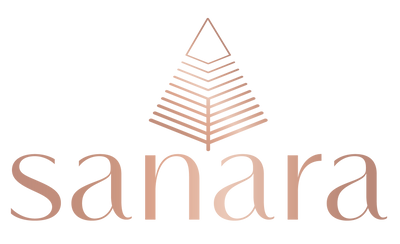Latin America.
I mean we’ve all heard of it right?
I found this interesting article in case you want to learn a little more about this region, "What is Latin America? Definition and List of Countries" by Rebecca Bodenheimer

Latin America. It’s known for so much. It’s known for its food, beautiful people of all colors, diverse terrain, indigenous peoples, it’s expansive biodiversity and so much more. So that’s why I was confused when in 2018, I started studying the beauty industry much less the wellness/spa industry and saw it lacked Latin American representation. Not just from a founder perspective but an ingredient perspective as well.
How could this be?
Since Latin America is the most biodiverse region in the world – the Amazon sweeping 40% of South America alone – it is home to the largest number of active natural ingredients rich in nutrients that help promote healthy skin and reduce signs of aging.
Well, a 2020 Cosmeticsdesign-europe article says I am not wrong.
"Great potential of Latin American plant biodiversity in the cosmetics industry and its low commercial exploitation in contrast to Asiatic plant biodiversity." (Cosmeticsdesign-europe.com April 2020)
Whoa! Wait a minute?! How often does an observation get proven 2 years later by a published research database?
Thank you universe, for always providing.
According to Industrial Crops and Products Volume 144, February 2020, 112007
The ancient customs that promote the use of plants and other natural sources to enhance beauty, promote healthy skin, and treat skin conditions are reborn today (González-Minero et al., 2018). The trend of consumers pursuing healthier lifestyles demands products that are natural, sustainable, and safe for themselves and the environment. Thus, the cosmetic industry has gained interest in plant ingredients and natural cosmetics; moreover, the size of the global natural cosmetics market was estimated to be US $34.5 billion in 2018 and is expected to reach US $54.4 billion by 2027 at a compound annual growth rate (CAGR) of 5.2 %, largely owing to skin and hair care products being the most demanded (Future Market Insights, 2019). Therefore, the great plant biodiversity of Latin America, with the largest number of vascular plant species on the world (Euromonitor International, 2019a), provides great opportunities for the growth of the Latin American cosmetic sector and for the development of natural, innovative, and sustainable ingredients and cosmetic products. Brazil, Colombia, Mexico, Peru, Ecuador, and Venezuela are in the top 10 list of the most biodiverse countries (Butler, 2016).
When I started out on this journey of discovering botanicals indigenous to Latin America, I had no idea the power it had. It is only now that I look back, a woman transformed, that I can see.
It is amazing how plants can do that for you.

They connect.
Connection to my past self. Memories of my Grandma Jasso performing her limpias (spiritual cleansings) for others or hearing stories of her commissioning teenagers to get her some herbs so she could make her own medicinal balms for her arthritis. This woman was a treasure to me and she's who I channel when I'm creating.
Connection to my current self. 2021 was my year to go deep. It was the year I began to recognize my own trauma responses that I once thought was just who I am. Thankfully with present connection and awareness, breath work, supportive friends and family, meditation and giving myself grace, I am connecting with my current self more than I ever have.
Connection to my future self. Honestly, it is yet to be seen but my vision is clear, I guarantee it will have something to do with Latin America and all the beauty it beholds, and I am sure my ancestors will continue to guide me.
So, follow along and see.

One of my favorite botanical finds is Cupuaçu Butter (Pronunciation: coo-pwah-soo). It is a butter native to the Amazon and a cousin to cacao that is shown to be 2X more hydrating than Shea Butter!
Shea Butter!
Shea butter comes from the nuts of karité trees that grow in the Sahel region extending from West to East Africa, from Guinea and Senegal to Uganda and South Sudan. It is a beautiful botanical from Africa and one we can all agree most have heard of.
And Cupuaçu? It is from a fruit that grows in the Brazilian Amazon Rainforest. Its botanical name is Theobroma grandiflorun and is very closely related to cocoa.
Fun fact: Brazilians make ice cream out of Cupuaçu and it is one of the most luxurious butters I’ve encountered. So far.

Yerba Maté.
I often give an analogy to help people comprehend Yerba Maté as a cosmetic botanical because as soon as I say Yerba Maté I get this bewildered look. So, I often say, “Yerba Maté is to South America as Green Tea is to Asia” and they immediately understand.
It's ok, I don't blame them, they simply haven't been exposed to these ingredients in a cosmetic setting but Sanara is here to change that.
Yerba Maté is a traditional South American herbal tea made from a plant from the holly family, known as ilex paraguariensis. It’s high in caffeine and abundant in antioxidants, vitamins, and powerful antibacterial properties.
These are simply 2 examples of the botanicals indigenous to Latin America that I’ve fallen in love with, and with Latin America being home to at least a third of the world’s total biodiversity there is so much more to discover.
But for today, Latin American botanicals and the beauty industry, allow me to introduce you.





